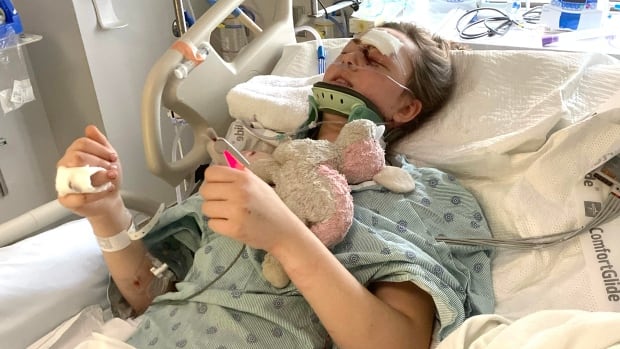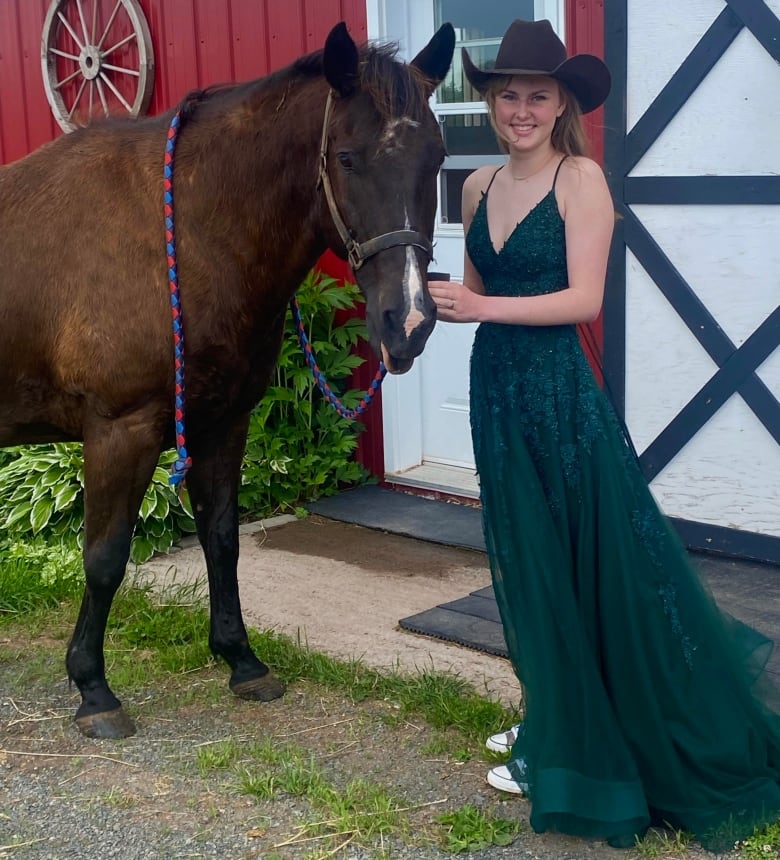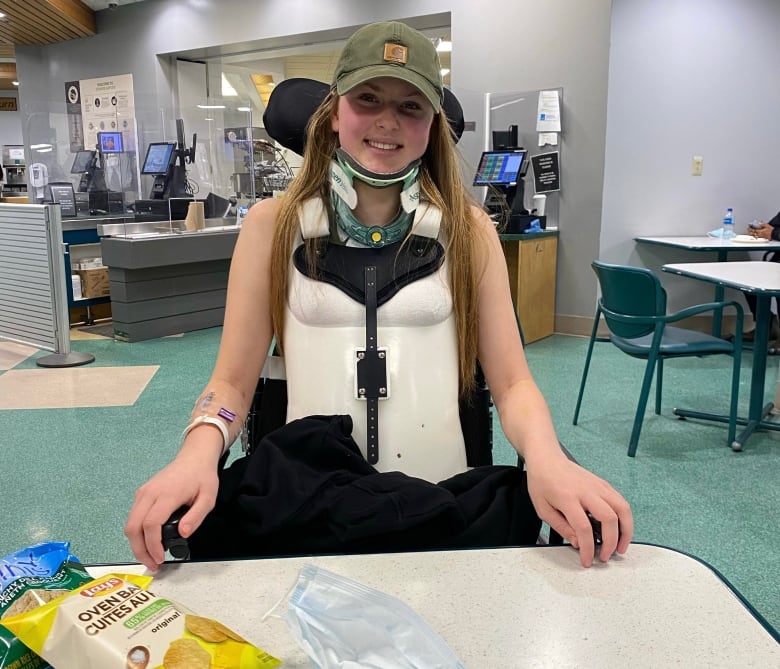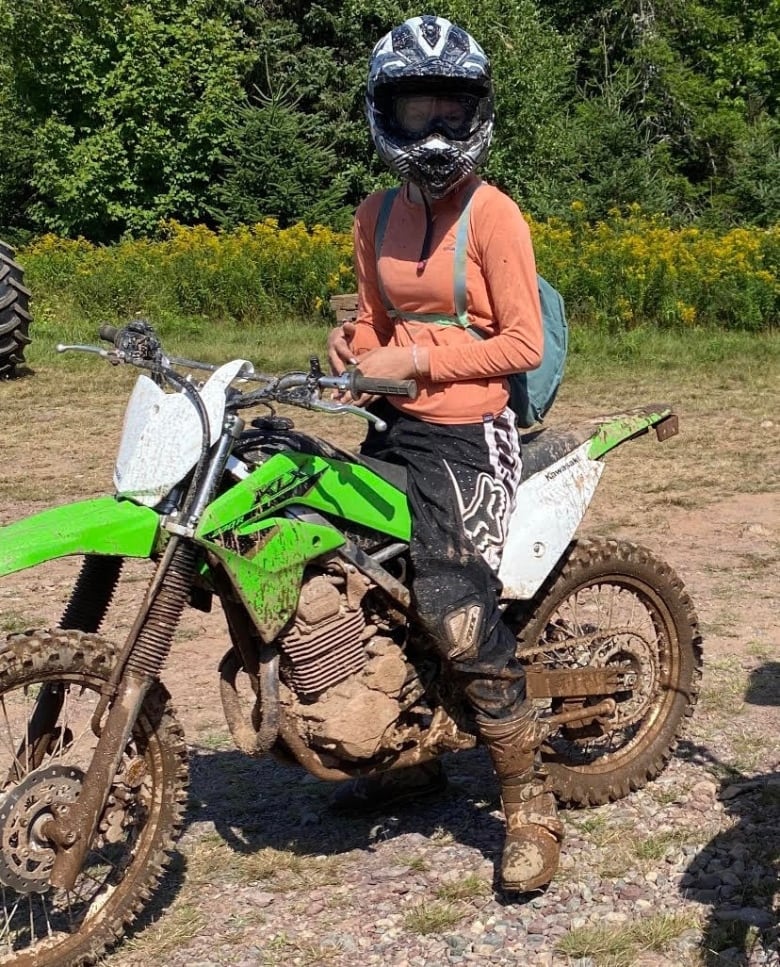
It was during the early hours of a cold February morning when Athalie Smith was airlifted to the QEII Health Sciences Centre in Halifax, where she would stay for the next 7½ weeks in one of the province’s only Level 1 trauma centres.
The 16-year-old had been ejected from a car during a single-vehicle crash in Pictou County. She was left with life-threatening injuries including a broken neck, ribs and lumbar, frostbite all over her body, and a bleeding kidney and spleen.
But according to her mother, Krista Fulton Smith, it was thanks to a new pilot program at the hospital that her daughter was able to survive.
“We’re going on five months, and she’s home. I’m gonna cry,” said Fulton Smith in tears. “She went to prom last night, where she walked. She’s walking without a leg brace. She’s walking without a walker.
“She had a smile on her face and she looked absolutely beautiful.”

The pilot program, called the trauma consult service, launched in October 2022 and it’s here to stay, according to Dan Cashen, provincial director of Trauma Nova Scotia.
The service is meant to ensure that trauma patients receive care from physicians and nurses who specialize in trauma. So far, it has six physicians and three nurses, along with other casual nurses who fill in from time-to-time.
Traditionally, trauma specialists would only care for a patient admitted to the QEII in order to perform a resuscitation or urgent care. Then the patient would be transferred to whatever unit was necessary, depending on their injuries.
Now, the trauma team follows the patient to their respective unit and cares for them until the moment they leave the hospital.
“The biggest difference comes from us being able to co-ordinate care across those services to make sure that nothing is being forgotten,” said Cashen. “We can take a more fulsome approach to the patient at the centre of the care and make sure that the patient is receiving all the best care from all of these different services.”
Dr. Robert Green is the senior medical director with Trauma Nova Scotia and was one of Athalie Smith’s trauma physicians.

“We follow patients and their families longitudinally, and they become our kind of partners,” said Green. “So there’s a real bond that we found that we’re really invested in getting our patients back to where they need to be. To get home and back to their lives.”
Both Cashen and Green told CBC News that the consult service has been incredibly positive so far. They said it’s helping to provide better patient care and outcomes, getting patients home sooner, and opening up more hospital beds.
“We’re certainly thriving in the health-care system that, you know, certainly has its pressure,” said Green.
After their stay, patients and their families are also given an opportunity to complete a survey on the level of care they received from the trauma consult team.
Out of hundreds of responses received so far, Green said the average score has been 4.7 out of 5 stars.
The program has also been recognized nationally, and was awarded the Charles Burns Award from the Trauma Association of Canada.
‘We added a few folks to our family’
These recognitions would come as no surprise to Athalie Smith and her parents, who are “so grateful for every single bit of care that was provided,” said Fulton Smith.
“When we saw their black jackets or their black shirts coming down the hallway, it was such a comforting feeling,” she said. “I don’t know if we would have been able to get through every day without this team.”
Fulton Smith also wanted to acknowledge the physicians, nurses and staff from other departments of the QEII as well, who she described as “fantastic.” But the special bond her family had created with the trauma consult team stands out.
“We sort of added a few folks to our family the first day we met them.”
Green even called Fulton Smith the other day to check in and see how they’re all doing.
“We would look forward to seeing this patient and this family, and they, I think, would look forward to seeing us,” said Green. “We’re even planning a little reunion with them.”

A once-avid equestrian, dirt-bike rider and snowboarder, Athalie Smith doesn’t know if or when she’ll ever be able to do the things she once enjoyed before the accident.
The now 17-year-old continues to attend physiotherapy and other rehab sessions at least three times a week, hoping to one day get back to full mobility. But at this point in her recovery, there is still a sense of uncertainty.
“[Athalie] still has such a great, positive attitude. She has some sad moments, and she has some grieving moments,” said Fulton Smith. “But I think most days she is very thankful.
“She knows how serious her accident was, she knows how serious her injuries were and she understands that it was very, very, very sort of a slim chance that she would be in the situation she is now.”